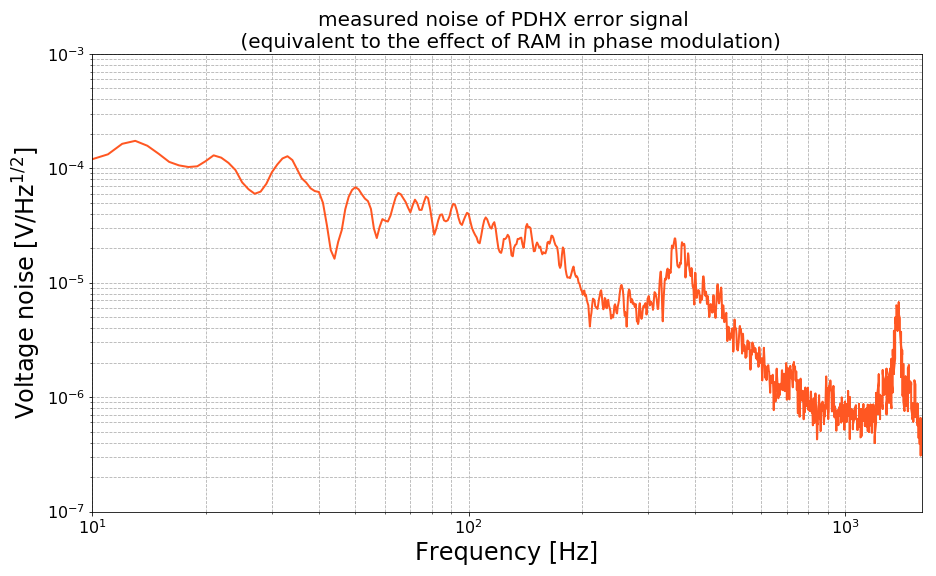Yutaro, Kiwamu,
Discussing over the phone, we are now suspecting that the PDH loop itself might have high sensing noise.
This hypothetical sensing noise can be as high as those we saw in the first attachment of the main log (see the plot) i.e.,1-10 Hz/Hz1/2 for 1064 nm above 20 Hz.
[Estimation of the frequency stabiility for the green PDH loop]
An estimation of the frequency stability for the green PDH can be obtained from the well-known transmission Lorentzian:
(Normalized Transmission) = 1 / (1 - (Delta f / f_c )2 ),
where Delta f is a frequency deviation of the 532-nm laser light with respect to a resonance in Hz and where f_c is the cavity pole which is about 490 Hz for 532 nm. Since we remembered that RIN in transmission has been something like 10% (or perhaps a bit smaller), we can guess that this corresponds to Delta f of 328 Hz for 532 nm in rms integrated below the cavity pole.
[Guesstimated sensing noise]
We now assume that sensing noise is flat in frequency domain in terms of frequency fluctuation in order to get some idea of how big it might be. In this case, it has to be as high as
(sensing noise) = 328 Hz / (490)1/2 = 14 Hz/Hz1/2 for 532 nm.
Looking at the spectra that Yutaro took yesterday (which are evaluated for 1064 nm and therefore one needs to multuply an extra factor of 2 to convert them to those for 532 nm), this estimated number seems close to what we saw in the actual measurements. If this theory holds, what we have seen in the unsuppressed PDH noise above 20 Hz would actually have to be sensing noise.
Now, moving on further, we estimate an effective RMS fluctuation in the frequency of the 1064 nm light using the above guesstimation. Very roughly speaking, since the 532nm stability is about 328 Hz, frequency noise in 1064 nm can be as big as 328/2 Hz = 164 Hz in rms. Qualitatively spaking, since the 1064 nm light expereinces a lower cavity pole, this rms estimation should be somewhat reduced when one compares this number against the cavity transmission in time series (see, for example, 7030). Overall, this theory doesn't contradict with the behaviors we have seen so far.
[Some other facts]
-
When the PDH loop is closed, fiber phase noise should be suppressed and therefore should not be critical in our consideration where the CARM loop is opened.
-
Similarly, any noises that are introduced in the PLL shouldn't contribute to the out-of-loop PDH stability because they should be suppressed as well.
-
According to the camera streaming of the green transmission, frequency fluctuation has some fast components faster than the mechanical motions of the suspensions.









